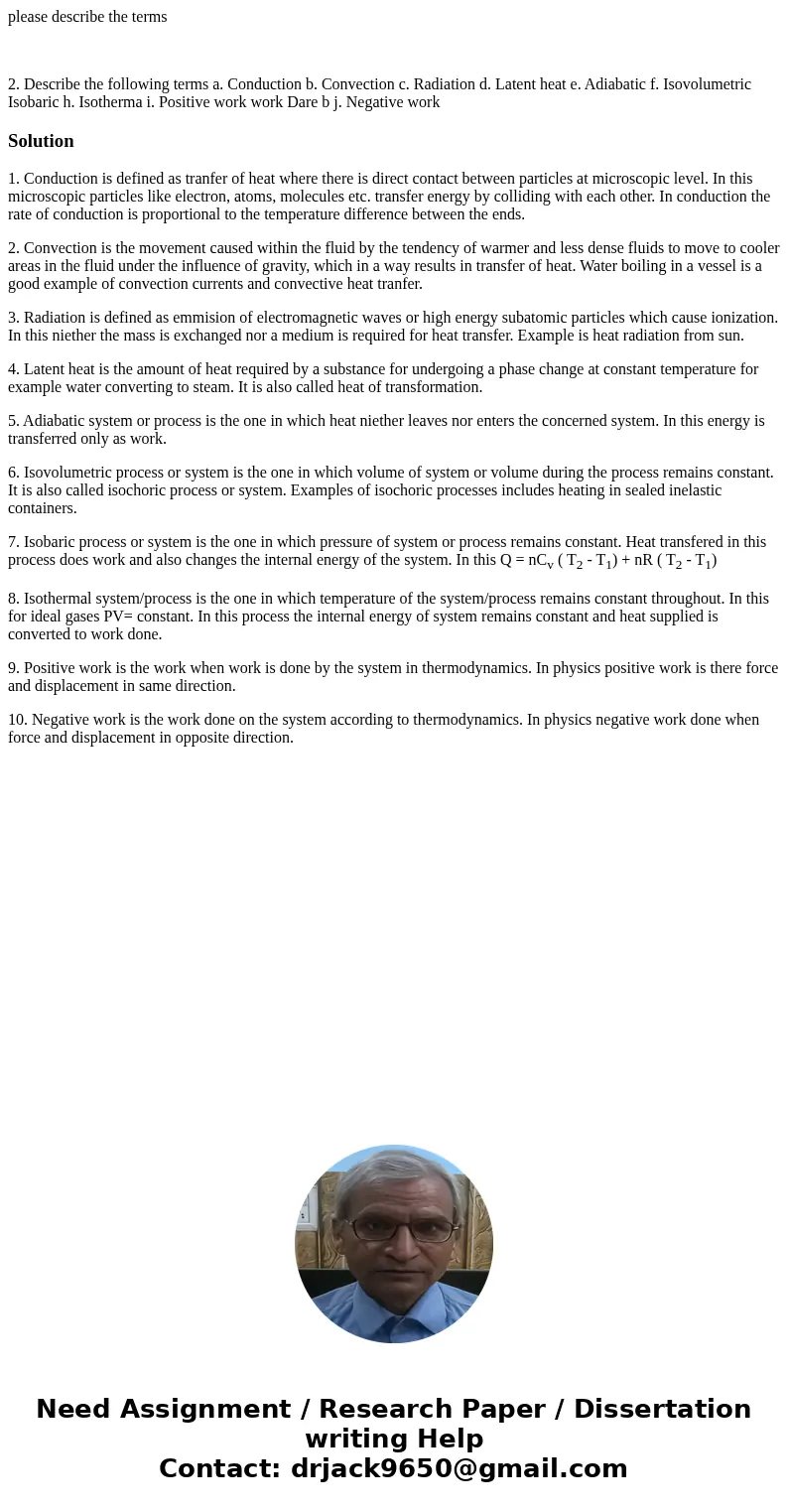please describe the terms 2 Describe the following terms a C
please describe the terms
Solution
1. Conduction is defined as tranfer of heat where there is direct contact between particles at microscopic level. In this microscopic particles like electron, atoms, molecules etc. transfer energy by colliding with each other. In conduction the rate of conduction is proportional to the temperature difference between the ends.
2. Convection is the movement caused within the fluid by the tendency of warmer and less dense fluids to move to cooler areas in the fluid under the influence of gravity, which in a way results in transfer of heat. Water boiling in a vessel is a good example of convection currents and convective heat tranfer.
3. Radiation is defined as emmision of electromagnetic waves or high energy subatomic particles which cause ionization. In this niether the mass is exchanged nor a medium is required for heat transfer. Example is heat radiation from sun.
4. Latent heat is the amount of heat required by a substance for undergoing a phase change at constant temperature for example water converting to steam. It is also called heat of transformation.
5. Adiabatic system or process is the one in which heat niether leaves nor enters the concerned system. In this energy is transferred only as work.
6. Isovolumetric process or system is the one in which volume of system or volume during the process remains constant. It is also called isochoric process or system. Examples of isochoric processes includes heating in sealed inelastic containers.
7. Isobaric process or system is the one in which pressure of system or process remains constant. Heat transfered in this process does work and also changes the internal energy of the system. In this Q = nCv ( T2 - T1) + nR ( T2 - T1)
8. Isothermal system/process is the one in which temperature of the system/process remains constant throughout. In this for ideal gases PV= constant. In this process the internal energy of system remains constant and heat supplied is converted to work done.
9. Positive work is the work when work is done by the system in thermodynamics. In physics positive work is there force and displacement in same direction.
10. Negative work is the work done on the system according to thermodynamics. In physics negative work done when force and displacement in opposite direction.

 Homework Sourse
Homework Sourse